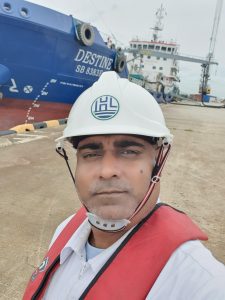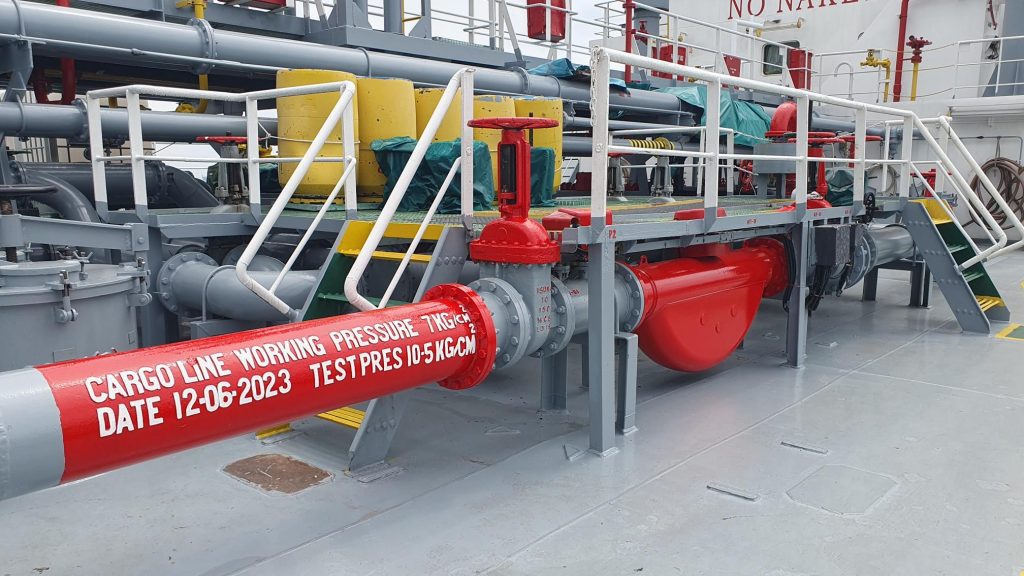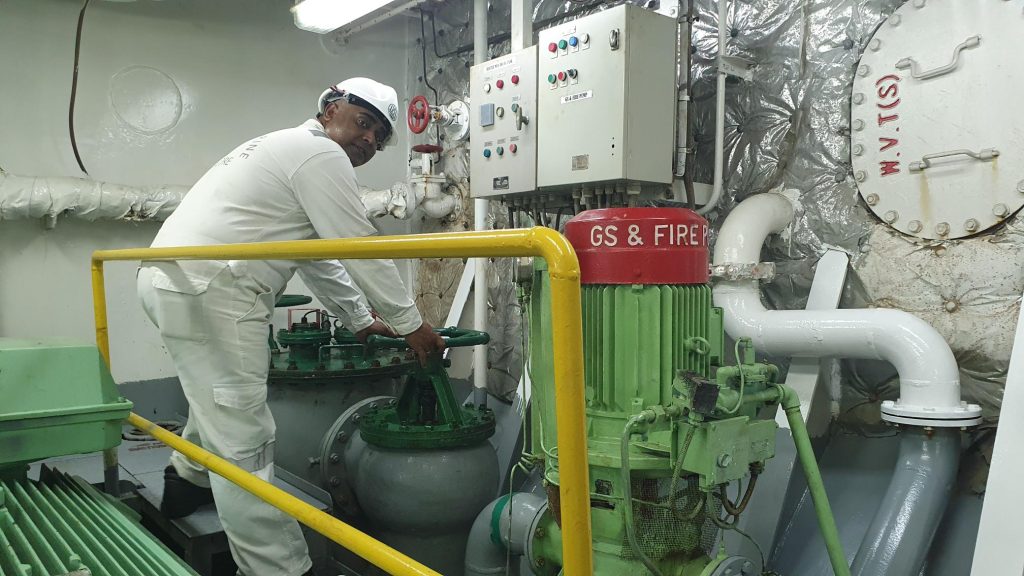The smooth operation of global trade relies heavily on the marine industry. Valve failure at sea can lead to serious safety hazards, environmental damage, and costly delays. This is why Hong Lam Marine prioritizes safety and efficiency particularly when it comes to the valves that control the flow of critical fluids.
By Laura Wang, Melonie Dodaro, Valve World
The global trade machine is powered by the tireless workhorses of the seas: ships. An astonishing 80% of the world’s goods travel by sea, making the maritime industry an essential link in the global economy. Ensuring the safety and efficiency of these vessels requires a meticulous eye for detail, particularly when it comes to the valves that control the flow of critical fluids. In this interview, we speak with Capt. Vijay Pal, Marine Superintendent of Hong Lam Marine PTE LTD, a leading operator in the bunkering industry.

Capt. Pal brings over two decades of valuable experience in the maritime industry to this conversation. His career began on deck as a deck officer, giving him a firsthand understanding of the daily operations and challenges faced at sea. Over the years, he has steadily progressed through the ranks, gaining a comprehensive understanding of all aspects of ship management.
Today, as Marine Superintendent at Hong Lam Marine, he plays a vital role in ensuring the smooth and safe operation of the company’s fleet.
Capt. Pal responsibilities encompass a wide range of tasks, including monitoring ship performance, verifying compliance with charterer requirements, overseeing critical inspections, managing navigation audits, and budgeting to ensure adherence to industry standards. He also plays a key role in crew training, ensuring all personnel possess the necessary skills to operate the vessels safely and efficiently. Throughout his career, Capt. Pal has developed a deep appreciation for the critical role valves play in maintaining the reliability and safety of these complex machines.
This interview will explore Capt. Pal’s insights on how Hong Lam Marine prioritizes valve performance and ensures their fleet operates at peak efficiency.
What is your major challenge or demand at work?
As a Marine Superintendent, my days are packed with ensuring the safe and efficient operation of our fleet. This includes tasks like monitoring vessel performance, verifying compliance with charterer requirements, and overseeing critical inspections like SIRE, ISM, ISPS, and MLC.
Additionally, I manage navigation audits following IMS procedures, oversee budgeting to ensure we meet industry standards, and conduct training for both crew members and senior shipboard management to guarantee adherence to our company’s HSSE policy. But a crucial aspect of my role is crew training. Equipping our personnel with the necessary skills and knowledge to operate the vessels safely and efficiently is paramount. Ultimately, all these efforts converge on a single goal: maintaining the reliability and safety of our vessels, and a significant part of that equation is ensuring the valves throughout our tanker fleet perform flawlessly.

What do you see are the biggest changes of the marine industry?

The maritime industry has undergone a significant transformation since I began my career. Back then, even Global Positioning Systems (GPS) were cutting-edge technology. Today, digitalization is fundamentally reshaping how we navigate the seas. Advanced monitoring systems are the eyes and ears of our modern vessels, collecting a wealth of data on everything from engine performance to fuel efficiency. By analyzing this data, we can optimize resource allocation, predict maintenance needs, and ensure smoother operations. This digital transformation isn’t just about having the latest gadgets on board; it’s about embracing a new way of operating. All stakeholders in the industry, from shipbuilders to crews, need to adapt and leverage these technologies to maximize their contributions.

Equally critical to our success is the unwavering focus on seafarer training. Training programs have seen a dramatic expansion in both quantity and quality, directly translating to enhanced safety standards. Safety remains the cornerstone of everything we do at sea. A myriad of regulations – ISO standards, IMO guidelines, and industry best practices – all converge on a single objective: zero fatalities. Safety isn’t just about preventing physical injuries; it’s about the human cost. Imagine the emotional devastation for loved ones back home when a crew member dies at sea, never getting to say goodbye. This is why we prioritize rigorous training that equips our crew with the necessary skills and knowledge to operate vessels safely and efficiently. They are trained to anticipate and avoid potential hazards, to respond effectively in emergency situations, and to foster a culture of safety onboard.
Even with the most advanced technologies and comprehensive training programs, accidents can still occur. The unforgiving nature of the sea demands constant vigilance and a commitment to continuous improvement. Safety is not a destination, but rather an ongoing journey that requires a culture of continuous improvement. Cutting corners on safety is never an option, not for a single moment. It’s a gamble not just on your own life, but with the lives of everyone on board. Here at Hong Lam Marine, we take safety extremely seriously. It’s embedded in every aspect of our operations, from the meticulous maintenance of our vessels to the ongoing training and development of our crew. We believe that by prioritizing safety, we are not only protecting lives but also ensuring the long-term sustainability of our industry.

How do you view the future competition of the marine industry and what factors do you think will determine success in this area?
In the competitive landscape of the marine industry, the key to success remains a relentless focus on safety and exceptional service delivery. At Hong Lam Marine, this commitment translates into a modern fleet equipped with cutting-edge technologies. Take, for example, our pioneering adoption of Mass Flow Meters (MFMs) in Southeast Asia. These MFM systems enhance transparency and efficiency in the bunkering process, solidifying our reputation as industry leaders who champion best practices. We further pushed boundaries by installing the largest available MFMs on two of our tankers, enabling them to handle high delivery rates.
Environmental responsibility is another pillar of our success. Hong Lam Marine stands out for being the first company to introduce purpose-built hybrid bunker tankers. These vessels boast cutting-edge diesel-electric power management systems that significantly improve fuel efficiency and minimize pollution. Our commitment to sustainability extends beyond this pioneering achievement. Our newest bunker vessel represents the pinnacle of innovation, featuring state-of-the-art automation and UMS technology. This allows for safe operation with a lean crew size, further reducing our environmental footprint.
Technology is only one piece of the puzzle. A highly skilled technical team forms the backbone of our safe and efficient operations. This team comprises seasoned ex-chief engineers with a wealth of onboard experience. Some team members even bring valuable expertise gleaned from the offshore industry. Their knowledge and dedication extend far beyond routine maintenance tasks. They play a crucial role in strategizing five-year PMS plans to optimize vessel performance during dry docking periods. Additionally, they manage spare parts procurement, ensuring we have a continuous supply of high-quality components to keep our fleet running smoothly and exceeding our charters’ expectations.

What special features are required for materials/valve products applied in tankers? What kind of design or function will be more promising for the future application?
Choosing the right valves for tankers is a critical decision with long-term implications. Shipbuilders meticulously design tankers well in advance, calculating loads on the vessel structure and piping systems. As a result, valve selection is a well-planned process. Typically, stainless steel pipelines are preferred for their durability and resistance to corrosion in harsh maritime environments. However, in certain applications, cost-effective alternatives like PVC or carbon fiber might be used for specific areas on some ships.
Ultimately, the maritime industry strikes a balance between upfront costs and long-term reliability. Traditionally, cast iron and galvanized/carbonized steel valves have been used.
However, the industry is shifting towards more sophisticated stainless steel valve options to ensure optimal performance particularly in smaller chemical tankers.
Valve suppliers
When it comes to valve suppliers, reputation and proven performance carry significant weight. Our fleet’s valves, installed over a decade ago, continue to function reliably, a testament to the quality of the original components. Predictably, aging is the primary concern regarding valves.


During routine maintenance checks, we evaluate each valve to determine if repair or replacement is necessary. Unsurprisingly, cost and quality remain paramount considerations when selecting valves. We maintain a trusted vendor list, with new suppliers only considered for specialized valves required in unique tanker construction projects.
Capt. Pal concludes: A commitment to excellence
“The marine industry is more complicated than it looks,” Capt. Pal emphasizes. “Reliability and quality are unshakable goals for us. We continue to invest in high-performance valves because they play a critical role in ensuring the safety and efficiency of our operations. These qualities are not just about the ships themselves; they are about protecting our environment and the wellbeing of our crews who operate these vessels day in and day out.”
About HONG LAM MARINE PTE LTD.
Established in Singapore in 1981, Hong Lam Marine has become a leader in the bunkering industry. Their commitment to excellence is reflected in their modern fleet of 35 tankers, totaling 300,000 DWT. These technologically advanced vessels prioritize safety and efficiency, making them the preferred choice for major oil companies, independent traders, and government agencies. Hong Lam Marine’s diverse fleet caters to a wide range of needs, with 25 tankers operating in key locations like Singapore and Port Tanjung Pelepas for bunkering, lubricants, and critical Jet A-1 fuel delivery. The remaining vessels operate internationally, transporting various cargoes worldwide.
About this Featured Story
This Featured Story is an article from our Valve World Magazine, May 2024 issue. To read other featured stories and many more articles, subscribe to our print magazine. Available in both print and digital formats. DIGITAL MAGAZINE SUBSCRIPTIONS ARE NOW FREE.
“Every week we share a new Featured Story with our Valve World community. Join us and let’s share your Featured Story on Valve World online and in print.”


